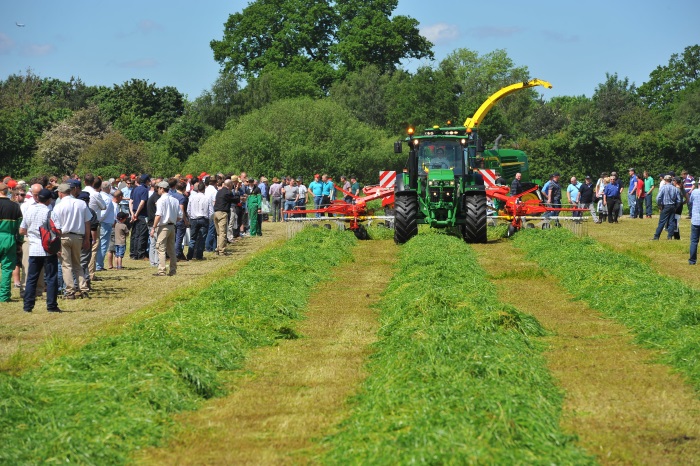Early spring is an opportune time for farmers to assess their grass swards, to maximise productivity in the season ahead. Charlie Morgan, grassland consultant at GrassMaster, will be speaking at this year’s Grassland & Muck Event, and offers his top five tips for getting the most from pasture.
Physical assessment
The first thing to do in the spring is walk the fields and see what they look like, says Mr Morgan. Randomly check several metre square plots, to get an accurate picture of the species present. “Note the sward density and ryegrass tillering, and look for more diploids than tetraploids for added yield and robustness.”
Small changes to measuring and evaluation can make big changes to grass yield and quality – find out more at Yara’s seminar to hear how case study farmers have boosted production from grass.
Evaluating plant species
For optimum performance, swards should be at least 50% ryegrass, with the remainder comprising less competitive grasses. “Any swards with less than 50% ryegrass should be reseeded,” says Mr Morgan. As an alternative, farmers could stitch in appropriate varieties, providing the sward is open enough. “Where a sward is dense, stitching in becomes more difficult due to increased competition.”
Swards should have no more than 5% weeds, 10% bare ground and, during early spring, around 5-10% clover, although this should reach 40% by the autumn.
To choose which new varieties and mixes to sow, visitors to the event will be able to see over 100 growing plots and obtain advice from a host of plant breeders.
Assessing nutrient status
Nutrient management is one of the biggest contributors to grass yield and quality, with effective use of nitrogen – based on soil temperature – an important but overlooked area. “Temperatures fluctuate in spring; as a guide I’d aim for 30kg/N/ha at turnout,” says Mr Morgan.
Farmers should look at the previous cropping as well as winter rainfall to estimate soil nitrogen levels, and remember to analyse slurry and manure. “Depending on the slurry nutrient levels the first dressing could be done in February using an umbilical system – avoiding the need for artificial nitrogen and increasing early growth.”
When measuring other nutrient levels and pH, he recommends soil testing every three years.
Examining soil structure
Poor soil condition is a major contributor to reduced pasture performance so farmers should dig a hole and physically examine their soil, says Mr Morgan. “Soil structure can give a lot of clues about the health and nutrient status of the soil. Farmers should look at evidence of compaction, worm activity and the smell and colour of the soil. They can then amend any areas of weakness.”
ADAS will be running a Soil and Nutrient Management Clinic at the event, covering a range of issues including structure and drainage. Visitors can even bring a soil sample to discuss with the expert team.
Improving grazing methods
Rotational grazing is proven to increase both yields and grass quality, says Mr Morgan. “Start rotational grazing as soon as possible, using tracks to access fields with short, sharp grazing periods to avoid compaction and quality loss,” he explains. “Build up a wedge in the autumn and graze it down to around 1500kg DM/ha at first turnout to remove any winter residue.”
New this year, Grassland & Muck is running a live demonstration on intensive rotational grazing of a herbal ley, with different types of temporary fencing. “We need to utilise what we grow,” says Mr Morgan. “Using the best grazing and management methods is vital to ensure grass isn’t wasted.”


